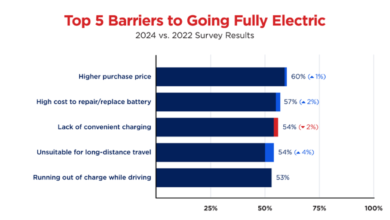Are electric vehicles safe to drive in a flood?

Abandoned cars sits on a flooded North 14th Avenue on Thursday, June 13, 2024, in Hollywood, Fla. Residents in Hollywood woke up to flooded streets and debris after Wednesday’s storm left their community inundated by heavy rain.
mocner@miamiherald.com
Among the hundreds of cars left stranded and stalled in the floodwaters that blanketed South Florida this week were plenty of electric vehicles. So just how safe is it to drive them through the water?
Gas engines are built to take in air and gas, and sucking in water is usually catastrophic. EVs have one advantage – seals that protect the batteries and electronics that power them – but those seals can degrade, said Jonathan Sanchez, the lead supervisor at EV Garage Miami.
“Depending on the model and year of the car, those seals may have deteriorated and over time that can cause leaks in the battery,” Sanchez said.
Sanchez, who previously worked on gas-powered cars and now focuses on EVs, said it can cost less to repair a water damaged EV than a car with a combustion engine – if you are lucky.
With a combustion engine, all the parts can be complicated and take a long time to repair, usually costing at least $10,000.
With some water damaged EVs, a mechanic can take out the battery and dry it – kind of like you’d do if you dropped your phone in the toilet. At EV Garage Miami, Sanchez said it would take about an hour and $500 to do that.
In other cases, the water seeps in too deep into the battery and results in “catastrophic” battery failure. If that happens, you could be looking at an $18,000 repair, Sanchez said.
This week, a handful of vehicles came into EV Garage Miami after the flood, but none had catastrophic battery failure. Sanchez saw panels that fell off the underside of cars, water damaged carpets and bumper covers that tore off from drivers crashing through the heavy water on the street.
Some companies boast that their cars can stand the test better than others in water. The Tesla Cybertruck can lift 2.5 feet off the ground and Elon Musk claimed the truck should be able to briefly cross rivers, and “even seas that aren’t too choppy.”
But the Cybertruck might not be invincible. Local10 news captured video of one being towed out of South Florida floodwaters this week.
Six inches of water will reach the bottom of most passenger cars and a foot of water will stall many vehicles, according to the National Weather Service. And this is true if the vehicle is electric or not.
After a video of a Tesla plowing through a flooded street in San Diego went viral last year, Brent Gruber at JD Power, a data analytics company, has tried to correct the notion you can drive an electric vehicle through flood water. For the last five years, Gruber has conducted research and market analytics on electric vehicles and said driving any vehicle through deep, standing water just isn’t realistic.
“I cringe when I see the videos because it damages the vehicle,” Gruber said.
After Hurricane Ian in 2022, the National Highway Traffic Safety Administration and Idaho National Laboratory engineers conducted research by taking apart the water damaged EVs to understand the impacts of flooding on their batteries.
During the hurricane, the report says between 3,000 to 5,000 electric vehicles were damaged. There were 600 EVs that were total losses and about 36 that caught on fire. In 2023, Hurricane Idalia also caused several EVs to catch fire.
The fires come from a result of salt or brackish water eroding the car, and South Florida’s early June downpour was largely a freshwater event in exception to areas like Edgewater that experienced flooding by the Bay.
“EVs are designed to operate safely in the rain but they are not designed to be boats,” Gruber said.
Ashley Miznazi is a climate change reporter for the Miami Herald funded by the Lynn and Louis Wolfson II Family Foundation in partnership with Journalism Funding Partners.



